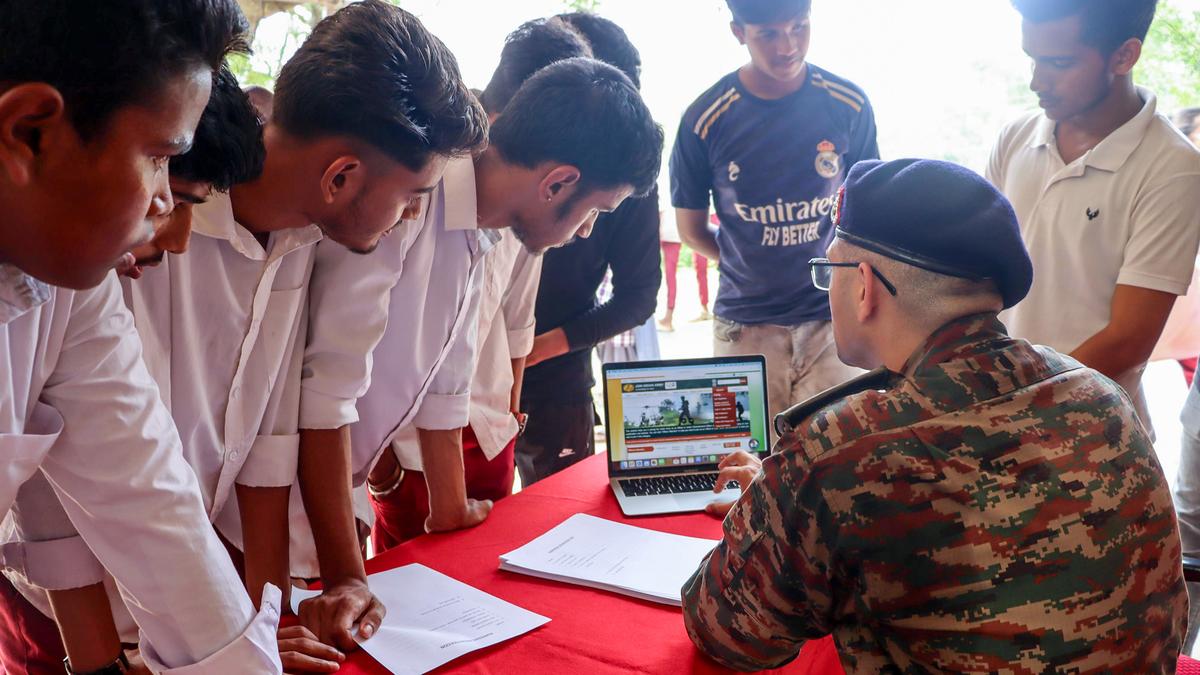
Will the Agnipath scheme be revamped? | Explained Premium
The Hindu
Agnipath scheme: Recruitment of Agniveers under Agnipath scheme sparks political debate, with NDA allies calling for discussions on changes.
The story so far: The recruitment of soldiers into the armed forces as Agniveers under the Agnipath scheme has been a major issue in the recent general election. After the election results, NDA allies, the Janata Dal (United) and Lok Janshakti Party (Ram Vilas), raised the issue of Agnipath and called for a discussion on it. The government is open to changes and discussions are on, officials in the know said.
The Agnipath scheme for recruitment of soldiers, sailors and airmen into the three services was announced on June 14, 2022 doing away with the earlier process of permanent recruitment. Under the new scheme, Agniveers are recruited for four years on the completion of which, up to 25% would be selected into the regular ranks on a permanent basis. The age bracket for new recruits was fixed at 17 and a half to 21 years of age and till 2026 the overall intake has been capped at 1.75 lakh. Subsequently, the Army is inducting 40,000 Agniveers per year and the Navy and Air Force are recruiting around 3,000 Agniveers each. Agniveers during their tenure can get class 12 certificates or a Bachelor’s degree in addition to other skill certificates and when leaving after four years will get a lumpsum amount but are not eligible for pension. Defence Minister Rajnath Singh had termed it a transformative initiative and a win-win situation for all.
The government has stated that the Agnipath scheme would bring down the average age of the armed forces from 32 to 26 years in line with the age profile of major armies worldwide. And that when Agniveers return to society, they will contribute to nation-building.
One of the biggest concerns for the armed forces, especially the Army, is the accentuating shortage of personnel in the ‘below the officer’s rank’ cadres. There was no recruitment during the COVID-19 period for over two and half years which created a deficiency. For context, around 60,000 soldiers retire from the Army every year, while 40,000 are being recruited every year. So effectively the shortage is adding on year by year. Additionally, the low conversion rate of 25% from Agniveers to regular soldiers is going to further accentuate the shortfall. Given the short duration of four years, the training schedules have also been compressed accordingly.
With the huge demand for recruitment into the Army in some parts of the country, the scheme became a political issue as well as a campaign issue during the election. The country was rocked by violent protests when the scheme was announced. Several parties have demanded that it either be scrapped or the concerns addressed.
There is anger among “certain sections” on the Agnipath scheme, said JD(U) leader K.C. Tyagi amidst talks within the NDA on government formation. “The Agnipath scheme should be reviewed clause by clause,” he said.
As reported by The Hindu earlier, as the Agnipath scheme completes two years of implementation, the Department of Military Affairs (DMA) in the Defence Ministry headed by the Chief of Defence Staff (CDS) has sought feedback from the forces on the scheme. This, officials said, is in line with the regular practice in the armed forces of reviewing any major scheme introduced or any weapon platform inducted to make required changes based on a detailed assessment.











